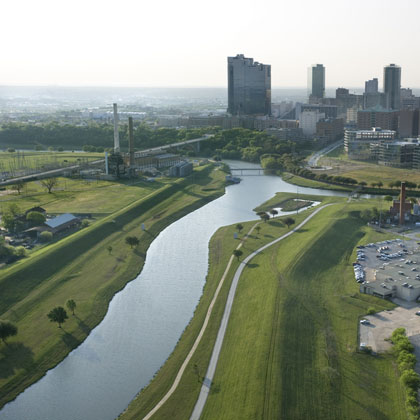Advances in Ecophysiology: A Look at Recent Papers on Hydraulic Failure

Advances in Ecophysiology: A Look at Recent Papers on Hydraulic Failure
How do trees die from drought? Plant ecophysiologists are studying air bubbles in tree water columns to understand hydraulic failure: in other words, when tree water columns stop working. Their goal is to improve forecasts for tree responses in a changing climate future. Here is a brief summary of how hydraulic failure works and an introduction to three recent papers on the topic.
Choat, B., Brodribb, T.J., Brodersen, C.R., Duursma, R.A., López, R., & Medlyn, B. Triggers of tree mortality under drought. Nature 558, 531–539 (2018). https://doi.org/10.1038/s41586-018-0240-x.
Johnson, D.M., Katul, G., & Domec, J.-C. (2022) Catastrophic hydraulic failure and tipping points in plants. Plant, Cell & Environment, 45, 2231-2266. doi: 10.1111/pce.14327.
Xu, G. Q., Chen, T. Q., Liu, S. S., Ma, J., & Li, Y. (2023). Within-crown plasticity of hydraulic properties influence branch dieback patterns of two woody plants under experimental drought conditions. Science of The Total Environment, 854, 158802. https://doi.org/10.1016/j.scitotenv.2022.158802.
Li X., Xi B., Wu X., Choat B., Feng J., Jiang M., & Tissue, D. (2022) Unlocking Drought-Induced Tree Mortality: Physiological Mechanisms to Modeling. Front. Plant Sci. 13:835921. doi: 10.3389/fpls.2022.835921.
How do trees die from drought? How do people help prevent mass mortality in forests in a changing climate future? Plant scientists are advancing our understanding of the stages of tree decline to predict whole forest responses to drought. Developing the next generation of predictive models requires mathematically linking plant mechanics to atmospheric data. This is important for improving predictions about the global carbon balance. Researchers around the world are contributing new papers toward solving this puzzle in plant physiology.
In 2018, a group of scientists spanning several universities published a paper in Nature to summarize the state of knowledge on this topic. They reviewed how climate change affects forests, and then described the cascade of physiological responses that trees undergo when drought strikes. Climate change can cause prolonged increases in air temperature, which increases the amount of moisture the air can hold (a phenomenon called vapor pressure deficit). Because the air can hold more water, more water evaporates from land and water bodies and transpires from plants. This is partly how climate change intensifies droughts.
Tree trunks have an internal conduit system that transports water from roots to a tree’s leaves. When a hotter atmosphere pulls hard enough on the water column in plants, the liquid chain of water can “snap,” introducing an air bubble—an embolism—into the chain. This process, called cavitation, is one of the primary ways trees desiccate from drought. Following an embolism in the trunk, connected individual branches in the canopy may die. When bubbles cause enough of the water column to stop flowing upward, a tree can reach a state of hydraulic failure. When embolisms spread, and hydraulic failure affects enough of a tree, the tree can reach a tipping point and die.
Before embolisms occur, stomata, tiny pores on the underside of leaves, will close to reduce pressure in a tree’s water column. An upward flow of water through open stomata cools the canopy and enables photosynthesis—as long as the soil has sufficient moisture. Because photosynthesis is a chemical exchange of water and sunlight to create sugar, when there’s not enough water, trees stop photosynthesizing. This means they also stop producing sugars and chemicals needed for growth and self-defense. Trees that have closed stomata during the daytime aren’t growing; they’re just waiting for rain. Because trees may lose a small amount of water through leaky bark and leaves even when stomata are closed, most trees will experience subtle physical changes in their roots and leaf veins to prevent water loss during drought. If drought slows photosynthesis for a prolonged period, trees may deplete stored sugars to support their essential respiration functions (known as “the carbon starvation hypothesis”)—a process that interacts with hydraulic failure. Leaves may ultimately incur heat damage if transpiration slows or stops for too long.
These are the cascading processes that scientists have identified and aspire to model so society can more accurately forecast mass tree death events. This year, several papers have contributed more nuance to our understanding of this topic.
One team from Georgia, North Carolina, and France proposed a new framework for modeling hydraulics failure. In a recent issue of Plant, Cell & Environment, researchers presented their ideas on how to mathematically connect hydraulic processes at different scales. Their equations model plants from the smallest scale—in roots, bubbles, and cells—all the way up to the whole plant scale. They took inspiration from math in multiple fields, including health epidemiology, to analogize how bubbles spread through plant tissues, similar to how viruses spread through susceptible populations. The authors used equations from thermodynamics, fluid dynamics, and plant ecophysiology to model how water bubbles work. The paper argues that a modeling theory from dynamical systems analysis called “catastrophe theory” could work for linking scales in models for plant hydraulic failure. They use a growth curve from ecology, called the von Bertalanffy equation, to help explain these concepts in plant hydrology. Their paper may help advance the field so scientists can use new satellite remote sensing tools (like vegetation water content or new microwave-based measurements for forest canopies) to detect water stress in forests earlier.
A different paper in Science of The Total Environment experimented with how different species of plants follow different patterns as they die back. For example, a poplar tree began to die from the top down, while a perennial succulent shrub died from its outer canopy first. The species they chose to study have different strategies for avoiding death from drought. One species’ survival strategy is to avoid drought; the other has evolved to tolerate it. This study tried to answer questions about how the different plant species’ architecture affects their drought response strategies. Shrubs, for example, are shorter and have less distance to transport water. The taller poplar tree experienced embolisms in the higher branches. Their results contribute to the constellation of knowledge on how canopies might change as water availability within a single forest changes. Their results suggest other scientists should consider the shape and form of a tree when looking at hydraulic failure.
Another 2022 study, in Frontiers in Plant Science, outlined a research agenda for improving land surface models (LSMs). LSMs are a type of model that can roll up into larger climate models. Prior generations of plant models have relied on more observation-based data. As the atmosphere changes, the next generation of plant models should mature so they can simulate future, not-yet-observed atmospheric conditions. Thus, the ecophysiology research community seeks to build future models that can simulate plant responses to drought by modeling fundamental parts of their physiology. Designing those improved models will require understanding each mechanism of plant decline individually and in mathematical relationship to each other. These authors propose a concept diagram for how these variables might mathematically relate. They include a table of measurable traits and describe each trait’s significance for improving tree mortality models.
What should science about hydraulic failure mean to a non-scientist? For non-scientists, a key insight is tracing back the whole chain of how mass plant death can occur due to the burning of fossil fuels. Burning fossil fuels contributes to cumulative atmospheric carbon emissions, which leads to warming. This added heat alters a fundamental pressure gradient between soils and the atmosphere, disrupting the water cycle that moves through plants, triggering plant responses to drought at a massive scale. Hydraulic failure occurs after plants have exhausted all other adaptive options. Possible large-scale outcomes of these atmospheric changes could include mass forest dieback, slower forest growth, and shorter-statured forests in the future. All of these may disturb the global carbon balance. Thus, while scientists around the world work to improve long-term modeling of forest mortality, one call to action for interested non-scientists is to help protect forests by working to lower carbon emissions through a shift away from fossil fuels.
This article was updated on January 11th 2024.




